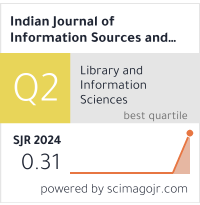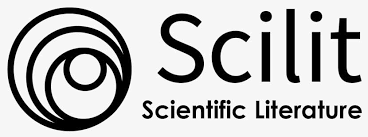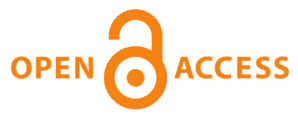Information Literacy Skills of CBSE School Students from Tamil Nadu, India
DOI:
https://doi.org/10.51983/ijiss.2019.9.2.607Keywords:
Information Literacy Skills, CBSE, Higher Secondary School, School StudentsAbstract
We examined the information literacy skills in Central Board of Secondary Education (CBSE) in higher secondary school students of were conducted. This study demonstrates and elaborates to analyze information literacy search skill among the school students, to know the purpose of visiting the library, to identify areas of information literacy skills among the students and their search strategies and to students’ ability to locate useful information. The sampling was taken in eight schools in three different districts of Tamil Nadu State. A total of 305 students were surveyed in four Kendriya Vidyalaya (KV) and four CBSE Affiliate Private Schools. Our study highlights that information literacy skills are found in both schools; though more information skills are having CBSE affiliated private school schools rather than Kendriya Vidyalaya School.
References
Association of College and Research Libraries. (2000). Information literacy standards for higher education. Chicago, IL: American Library Association (ALA). Retrieved from http://www.ala.org/ala/acrl/acrlstandards/standards.pdf
American Library Association (1989). Presidential Committee on Information Literacy. American Library Association. Chicago. Retrieved from www.ala.org/acrl/nili/ilit1st.html.
Blummer, B., & Kenton, J. M. (2014). Reducing patron information overload in academic libraries. College & Undergraduate Libraries, 21(2), 115-135. http://dx.doi.org/10.1080/10691316.2014.906786
Bowles-Terry, M. (2012). Library instruction and academic success: A mixed methods assessment of a library instruction program. Evidence-Based Library and Information Practice, 7(1), 82–95.
Brown, C. M. (1999). Information literacy of physical science graduate students in the information age. College & Research Libraries, 60(5), 426–38.
Burns, E. (2008). Retrieved from http://searchenginewatch.com.
Burton, V. T., & Chadwick, S. A. (2000). Investigating the practices of student researchers: Patterns of use and criteria for use of Internet and library sources. Computers and Composition, 17(3), 309–328.
Cameron, L., Wise, S. L., & Lottridge, S. M. (2007). The development and validation of the information literacy test. College & Research Libraries, 68(3), 229–237.
Chen, L. C., Chen, Y. H., & Ma, W. I. (2014). Effects of integrated information literacy on science learning and problem-solving among seventh-grade students. Malaysian Journal of Library and Information Science, 19(2), 35-51.
Eisenberg, M. B., & Johnson, D. (1996). Computer skills for information problem-solving: Learning and teaching technology in context. Syracuse, New York, ERIC Clearinghouse on Information and Technology.
Eisenberg, M. (2008). Information literacy: Essential skills for the information age. DESIDOC Journal of Library & Information Technology, 28(2), 39-47. Retrieved from http://bit.ly/UHB9Pr
Elahe K. Z., Gheorghita, G., & Sherry Y. C. (2008). User perceptions of online public library catalog. International Journal Information Management, 28(6), 492-502.
Gawith, G. (2000). Information Literacy: Theory and Practice. Good Teacher, 3(3), 4–5.
Gross, M., & Latham, D. (2007). Attaining information literacy: An investigation of the relationship between skill level, self-estimates of skill, and library anxiety. Library & Information Science Research, 29(3), 332–353. doi:10.1016/j.lisr.2007.04.012.
Hall, A. S., & Parsons, J. (2001). Internet addiction: College student case study using best practices in cognitive behavior therapy. Journal of Mental Health Counseling, 23(4), 312-327.
Jackson, L., & Hansen, J. (2006). Creating collaborative partnerships: Building the framework. Reference Services Review, 34(4), 575–588.
Kuhlthau, C. (1993). Seeking meaning: A process approach to library and information services. Greenwich CT, Ablex.
Lorenzen, M. (2001). The land of confusion?: High school students and their use of the World Wide Web for research. Research Strategies, 18, 151–163.
Majid, S., Foo, S., Luyt, B., Zhang, X., Theng, Y. L., Chang, Y. K., & Mokhtar, I. A. (2011). Adopting evidence-based practice in clinical decision-making: Perceptions, knowledge, and barriers. Journal of the Medical Library Association, 99, 229-236.
Majid, S., Chang, Y. K., & Foo, F. (2016). Auditing information literacy skills of secondary school students in Singapore. Journal of Information Literacy, 10(1), 44-66.
Rehman, S. U., & Alfaresi, S. (2009). Information literacy skills among female students in Kuwaiti high schools. Library Review, 58(8), 607–616.
Wilson, T. D. (1981). On user studies and information needs. Journal of Documentation, 37, 3-15.
Wong, S. H. R., & Cmor, D. (2011). Measuring the association between library instruction and graduation GPA. College & Research Libraries, 72(5), 464–473.
Yeh, Y., Hsu, Y., Chuang, F., & Hwang, F. (2014). Middle-school students’ online information problem-solving behaviors on the information retrieval interface. Australasian Journal of Educational Technology, 30(2), 245-260. Retrieved from http://dx.doi.org/10. 14742/ajet.478.
Downloads
Published
How to Cite
Issue
Section
License
Copyright (c) 2019 The Research Publication

This work is licensed under a Creative Commons Attribution-NonCommercial-NoDerivatives 4.0 International License.









